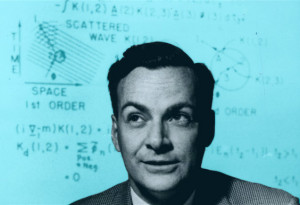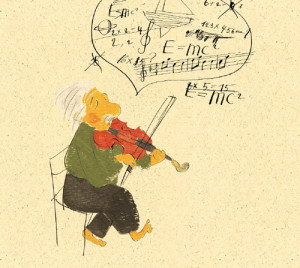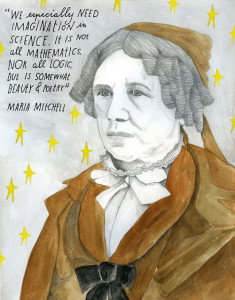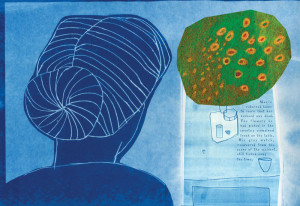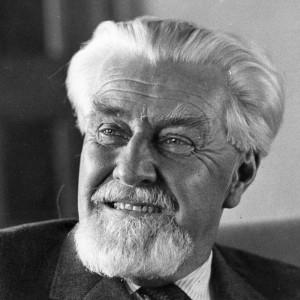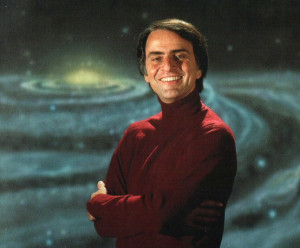From Galileo to Sagan, Famous Scientists on the Art of Wonder, the Mystery of the Universe, and the Heart of Science
SCIENCE - SPIRITUALITY, 27 Jan 2014
Maria Popova, Brain Pickings – TRANSCEND Media Service
“It would be a very dull universe for any intelligent being were everything of importance to be known.”
“As human beings,” legendary primatologist Jane Goodall told Bill Moyers in their fantastic conversation about science and spirit, “we can encompass a vague feeling of what the universe is, and all in this funny little brain here — so there has to be something more than just brain, it has to be something to do with spirit as well.” But what might that something be, exactly? What profound element of the human condition could compel us again and again to seek to transcend our human confines and pierce the mystery of the universe? That’s precisely what Marco Bersanelli and Mario Gargantini explore in From Galileo to Gell-Mann: The Wonder that Inspired the Greatest Scientists of All Time: In Their Own Words (public library) — a magnificent collection of fragments of thought and personal testaments strung together onto a common thread that reveals the immutable sense of awe and imaginative intuition that propelled the great researchers, experimenters, and thinkers who made history’s most meaningful scientific discoveries. Underpinning these first-hand accounts, which come from such celebrated minds as Nikolas Copernicus, Marie Curie, and Richard Feynman, is the eternal question of how reverence and spirituality fit in with impulse for science.
The book is divided into seven chapters (curiously, a number of high significance in many religions), each exploring a different aspect of the scientific mind — Wonder, Observation, Experiment, Discovery, Certainty, Sign, and Purpose — and divided into sub-sections like “Wonder and Contemplation,” “Certainty and Patience,” and “Purpose and Responsibility.”
Bersanelli and Gargantini write in the foreword:
The experience of research takes place as a struggle with the mystery of reality, according to the partial but original perspective offered by the scientific method. In various ways, scientists are moved by the hope of grasping the order and direction of the natural world, taking account of it in the cosmic context in which we live, and catching sight of the possible unity of the universe behind the multiplicity of forms. For the scientist in action, the basic questions relate to this struggle; they are implicitly but potentially at work in the very movement of knowledge, in research into the twists and turns and the matter of the material world. In this sense, scientific knowledge, too, is in its way a manifestation of that incurable tendency of the human being to ask why things are as they are, never satisfied with partial answers. That does not mean that the relationship between scientific knowledge and religious sense involves building an improbable bridge between two distant banks; rather, scientific research proves to have its seed and its profound roots in the human need for satisfaction and meaning.
The thing science and spirituality share above all, they argue, is the notion of childlike wonder:
At the origin of the phenomenon of scientific knowledge, we find wonder and the contemplation of reality, as we find it created in front of us and not in accordance with the affirmation of our sensibilities or a preconceived image. Therefore, to say that in the mind of the scientist there is something like a childlike spirit is not a rhetorical phrase but indicates a distinctive feature of the attitude required to understand reality: to know how to look, to allow oneself to be amazed by what is there.
In the chapter on wonder, Bersanelli and Gargantini consider what psychologists and neuroscientists are only beginning to understand — that the whimsy of the world reveals itself based on the quality of our attention — and argue for wonder as a kind of active curiosity we engage rather than a passive phenomenon bestowed upon us from above:
Noting the presence of things is the first and fundamental action of the human being who knows. It is from this strange passivity that curiosity, questions, the desire for research grow. Perhaps for this reason, at the heart of all great scientists there is something that, as in a child, keeps their eyes wide open and focused on reality.
[…]
This wonder at existence is the condition for an authentic encounter with things and opens up the possibility of knowledge. . . . This is a wonder that does not stop at an aesthetic sentiment, is not reduced to a momentary curiosity, but is the beginning of a process, kindling the desire to enter into relationship with the world, to get to know it.
Among the most beautiful personal testaments to that effect comes, perhaps unsurprisingly, from Richard Feynman — in a sentiment he would later come to echo in his famous monologue on how knowledge adds to rather than diminishes the beautiful mystery of the universe, he writes in a 1958 essay titled “The Value of Science”:
The same thrill, the same awe and mystery, come again and again when we look at any problem deeply enough. With more knowledge comes deeper, more wonderful mystery, luring one on to penetrate deeper still. Never concerned that the answer may prove disappointing, but with pleasure and confidence we turn over each new stone to find unimagined strangeness leading on to more wonderful questions and mysteries — certainly a grand adventure!
Albert Einstein, whose intense interest in how science and spirituality converge around the question for Truth comes most blazingly alive in his legendary conversation with the Indian philosopher Tagore, identifies this capacity for wonder as the fundamental characteristic of scientists, but also something they share with artists.
The most beautiful and deepest experience a man can have is the sense of the mysterious. It is the underlying principle of religion as well as all serious endeavor in art and science. He who never had this experience seems to me, if not dead, then at least blind. . . . To sense that behind anything that can be experienced there is something that our mind cannot grasp and whose beauty and sublimity reaches us only indirectly and as a feeble reflection, this is religiousness. In this sense I am religious. To me it suffices to wonder at these secrets and to attempt humbly to grasp with my mind a mere image of the lofty structure of all that is there.
But perhaps most evocative of all is this meditation from pioneering astronomer Maria Mitchell, whose wisdom on science and life continues to resonate today:
These immense spaces of creation cannot be spanned by our finite powers; these great cycles of time cannot be lived even by the life of a race. And yet, small as is our whole system compared with the infinitude of creation, brief as is our life compared with cycles of time, we are so tethered to all by the beautiful dependencies of law, that not only the sparrow’s fall is felt to the outermost bound, but the vibrations set in motion by the words that we utter reach through all space and the tremor is felt through all time.
Bersanelli and Gargantini synthesize these sentiments beautifully:
The wonder is not in fact circumscribed and delimited in advance of knowledge, as is commonly thought. Indeed the very acquisition of knowledge is the cause of another wonder. It is as if the advance in our capacity to describe nature scientifically inexorably increases our perception of the inexhaustible character of reality.
Marie Curie returns to the notion of childlike curiosity as the essential quality that humanizes science in the face of allegations about its mechanical sterility:
I belong in the ranks of those who have cultivated the beauty that is the distinctive feature of scientific research. A scientist in the laboratory is not just a technician; he confronts the laws of nature as a child confronts the world of fairy tales. We do not have to make people believe that scientific progress can be reduced to a mechanism, to a machine: things which, moreover, have their beauty.
I do not believe that the spirit of the scientific enterprise threatens to disappear from our world. If there is something vital in everything that I notice, this is the spirit of adventure which seems inextinguishable and is bound up with curiosity.
Bersanelli and Gargantini observe a common theme:
The sense of beauty in the world seems to be a basic requirement for bringing curiosity to bear and therefore for research.
Beauty, of course, is a rather subjective notion, but that’s precisely the point: What Hunter S. Thompson believed about journalism, Bersanelli and Gargantini argue about science — the stereotypical expectation of “objectivity” is a myth, one that stands diametrically opposed to the subjective personal investment that all great scientists have in common. They cite the Nobel-winning Austrian ornithologist and zoologist Konrad Lorenz, godfather of modern ethology:
At a time when it has become fashionable to regard science as an essentially value-indifferent undertaking, it is understandable that the scientist feels obliged to demand of himself a value-free attitude toward his research subject or toward the object of his study. I regard this vogue as dangerous, however, because of its self-deception. For example, all of the biologists I know are undeniably lovers of their objects of study, in exactly the same sense that someone whose hobby is aquaria is in love with the objects being cared for.
Every human who can become sentient to and experience joy in creation and its beauty is made immune to any and every doubt about its meaning. . . .
For Isaac Newton, this sense of joy took the shape of a kind of playfulness:
I don’t know what I may seem to the world, but, as to myself, I seem to have been only like a boy playing on the sea shore, and diverting myself in now and then finding a smoother pebble or a prettier shell than ordinary, whilst the great ocean of truth lay all undiscovered before me.
In another chapter, exploring the art of observation, Bersanelli and Gargantini write:
Perhaps we can say that observing means looking with a possibility of knowing what we are looking at. It is an interested seeing, which is the prelude to a closer and more profound relationship between the subject and the object. . . . Human observation implies the hope (implicit or explicit) of knowing, possessing, “capturing” the object, namely grasping its link with the totality of things.
There is no more poetic articulation of this notion than in the words of Carl Sagan, who bequeathed us history’s most memorable meditation on the universe and who endures as arguably modernity’s greatest patron saint of the wonder of science:
Human beings are, at least so far, an extraordinarily successful species, dominating the land, sea, and air of their native planet, and now, in at least a preliminary way, setting forth to other places. The secret of our success is surely our curiosity, our intelligence, our manipulative abilities, and our passion for exploration — qualities that have been extracted painfully through billions of years of biological evolution. It is in the nature of mankind and the corollary of our success to ask and answer questions, and the deeper the question the more characteristically human is the activity.
But in Sagan’s words we also find an essential reminder that curiosity is its own infinite reward and not a mere means to some greater, finite end of knowledge. He writes:
But there is some comfort in the thought that we will never know everything. It would be a very dull universe for any intelligent being were everything of importance to be known.
From Galileo to Gell-Mann is a superb read in its entirety. For more meditations on the subject, see Alan Lightman on science and spirituality, Isaac Asimov on humanism, Ada Lovelace on the interconnectedness of the universe, and Carl Sagan’s Varieties of Scientific Experience.
For an equally compelling compendium of famous scientists’ first-hand reflections on the heart of science, see the 1957 gem The Art of Scientific Investigation.
Thanks, Lindsey
_____________________________
Brain Pickings is the brain child of Maria Popova, an interestingness hunter-gatherer and curious mind at large obsessed with combinatorial creativity who also writes for Wired UK and The Atlantic, among others, and is an MIT Futures of Entertainment Fellow. She has gotten occasional help from a handful of guest contributors.
Go to Original – brainpickings.org
DISCLAIMER: The statements, views and opinions expressed in pieces republished here are solely those of the authors and do not necessarily represent those of TMS. In accordance with title 17 U.S.C. section 107, this material is distributed without profit to those who have expressed a prior interest in receiving the included information for research and educational purposes. TMS has no affiliation whatsoever with the originator of this article nor is TMS endorsed or sponsored by the originator. “GO TO ORIGINAL” links are provided as a convenience to our readers and allow for verification of authenticity. However, as originating pages are often updated by their originating host sites, the versions posted may not match the versions our readers view when clicking the “GO TO ORIGINAL” links. This site contains copyrighted material the use of which has not always been specifically authorized by the copyright owner. We are making such material available in our efforts to advance understanding of environmental, political, human rights, economic, democracy, scientific, and social justice issues, etc. We believe this constitutes a ‘fair use’ of any such copyrighted material as provided for in section 107 of the US Copyright Law. In accordance with Title 17 U.S.C. Section 107, the material on this site is distributed without profit to those who have expressed a prior interest in receiving the included information for research and educational purposes. For more information go to: http://www.law.cornell.edu/uscode/17/107.shtml. If you wish to use copyrighted material from this site for purposes of your own that go beyond ‘fair use’, you must obtain permission from the copyright owner.
Read more
Click here to go to the current weekly digest or pick another article:
SCIENCE - SPIRITUALITY:
